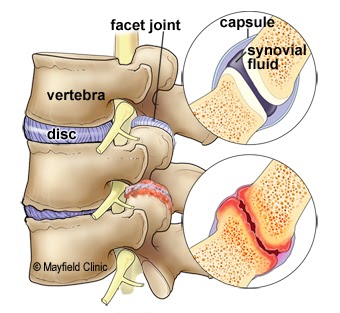Facet dysfunctions Treatment in Jaipur
Dr. Arvind Jaga is a highly experienced and qualified physiotherapist who specializes in Facet dysfunctions Treatment in Jaipur. Facet joints are small joints located between the vertebrae in the spine that help provide stability and mobility to the spine. When these joints become dysfunctional, it can cause significant pain and discomfort.
Dr. Jaga understands the complexity of facet dysfunctions and offers a comprehensive Facet dysfunctions Therapy plan to his patients in Jaipur. He uses a combination of manual therapy, exercise therapy, and other modalities to help his patients manage their pain and improve their quality of life.
Manual therapy is a hands-on technique that is used to mobilize and manipulate the spine. Dr. Jaga uses this technique to target specific areas of the spine that are causing pain and discomfort. This can help to relieve pressure on the facet joints and improve mobility.
Exercise therapy is an essential component of the treatment plan for facet dysfunctions. Dr. Jaga works with his patients to develop a customized exercise program that is designed to help strengthen the muscles that support the spine. This can help to reduce pain and improve mobility.
In addition to manual therapy and exercise therapy, Dr. Jaga may also use other modalities such as heat therapy, cold therapy, and electrical stimulation. These modalities can help to reduce pain and inflammation and promote healing.
Dr. Jaga believes in a holistic approach to treating facet dysfunctions. He works closely with his patients to develop a comprehensive treatment plan that addresses their unique needs and goals. He also educates his patients on proper posture and body mechanics to help prevent future injuries.
If you are struggling with facet dysfunctions in Jaipur, Dr. Arvind Jaga is here to help. With his extensive experience and knowledge, he can provide you with the effective treatment you need to manage your pain and improve your quality of life. Contact his clinic today to schedule an appointment for Facet dysfunctions Treatment in Jaipur .
Treatment
Conservative management is used as first-line therapy to treat facet-mediated pain.
- Anti-inflammatory medications, weight loss, muscle relaxers, physical therapy, and massage are therapies used in conjunction with one another as a multimodal approach to treating the pain.
When conservative measures fail, interventional procedures are considered to reduce pain, improve functionality and reduce side effects from medications.
Image: Medial Branch Nerve Block Injection, Chronic Pain Treatment
Medial branch blocks (Radiofrequency ablation uses heat to temporarily destroy the medial branch of the sensory nerve,providing a reduction of pain).
- Diagnostic medial branch blocks are often performed to confirm the generation of the pain is from the facet joints. If a patient has a positive response to a set of two diagnostic blocks, radiofrequency ablation can then be done to ablate the medial branch nerves.
- Improved function and decreased pain have been shown to last from 6 to 12 months following lumbar medial branch radiofrequency ablation.
- The procedures mentioned above are done usually under local anesthesia and fluoroscopic guidance.
- Because nerves regenerate eventually, the procedure is repeatable when the patient’s pain returns, typically in 6 to 12 months.
There are currently no guidelines available to support arthrodesis when interventional procedures fail to provide pain relief. Surgery may be indicated for grade I or grade II spondylolisthesis; however, this is not first-line management and may not result in the reduction of pain.

Physical therapy
Almost all treatment programs for facet joint disorders involve some type of structured physical therapy and exercise routine, which is formulated by a medical professional with training in musculoskeletal and spinal pain.
Physical therapy typically includes a combination of manual therapy, low impact aerobic exercise, strengthening, and stretching. Over time, this treatment is useful in improving and maintaining the stability of the lower back and fostering a healing environment for the tissues. When exercises are performed as directed, long-term pain relief may be experienced.
Medication
Both prescription and over-the-counter medications may be used for facet joint pain relief. Common oral medications include 1 :
- Acetaminophen
- Nonsteroidal anti-inflammatory drugs (NSAIDs)
- Muscle relaxants
- Antidepressants
Topical pain-relieving medication may also be helpful to relieve local tenderness in the lower back and/or legs. Topical medications are available in the form of gels, creams, oils, and patches, and can be purchased over the counter.
